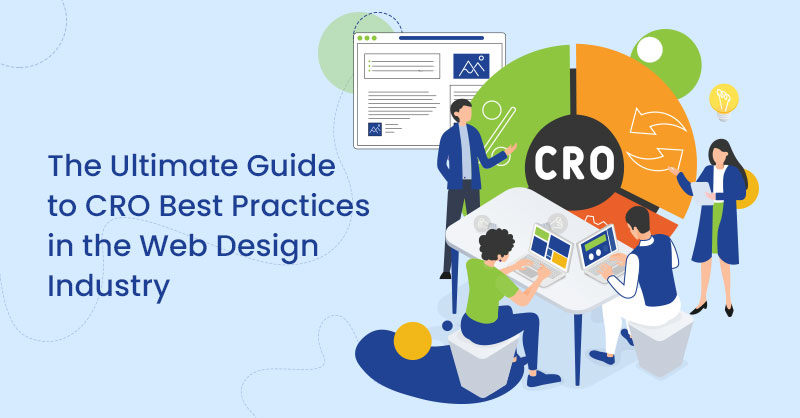When looking at a company’s digital marketing strategy, we usually look at organic and paid media strategies to gauge success. The importance of both components still exists, but oftentimes the website itself can be overlooked, and how it greatly affects performance and strategy. You can have the best link building, bidding, and targeting but if the landing page or website itself is not optimized, you have lost a lead. The four most common ways of evaluating a website is by looking at the website’s UX design, UI design, site speed and mobile experience.
UX Design
UX design is the process of creating products that provide a meaningful and relevant experience to users. In other words, it’s providing the best experience for a user from beginning to end. Using this definition when looking at a website, we want to ensure that when the user comes to a site, they are able to get the information they are looking for in the fewest clicks as possible.
From a marketing standpoint, we want to ensure that someone can convert on every page and as quickly as possible and answer as many questions before contact is made. In order to set up the best user experience, you need to understand what the user wants. Take a shipping company for example; some users will be on the site to ship a product while the other will be looking to get tracking information. This means that the shipping company should optimize their site so that users have easy access to this specific information.
Below are some do’s and don’ts of UX design for websites:
Do’s
- Clearly define sections of your page and the purpose they serve. Having headers over sections of your page copy, images for categories that need better explanation or interlinking to other pages on the site make the experience much better
- Bullet points are your friend. Break up blocks of text and copy with bullet points to make it easier to read. People are always on the go, so providing information in a clean and organized fashion as quickly as possible is ideal
- Ask for feedback. Whenever making a change to a site, task some to go through the site and monitor their interaction. Getting someone to just interact with a site for the first time is a real measuring stick on what is really happening
Don’t
- Never compromise functionality for aesthetic when it comes to your website. Although having a nice looking site is important, if the usability is lacking, you will not get the conversions you are looking for
- Don’t make the functionality different page to page. If you have a contact form or phone number in the footer or header, make sure it’s on every page. People are accessing your site from different devices, so be sure to take this into account
UI Design
UI design builds upon the fundamentals of UX to enhance the user experience on a site. UX focuses on how a product flows, the look of the experience and how it can be made visually appealing. In other words, make sure your site is visually appealing enough for the user to want to navigate it. UI looks at the colour palette of a site, icons, and shapes within the site for the best experience. Here are some examples of the best UI practices to follow for your digital marketing strategy:
- Colour affects interactions more than you think. For example, having the same colour throughout the site can make the user experience stale and difficult to differentiate contact points. Using a third colour for focal point items will draw attention to those items. If conversions are your driving goal for marketing, use a third colour in your site for contact buttons, phone numbers, and forms
- Use clear and easy to read fonts. Sometimes branded fonts can be difficult to read on different devices. If you are committed to your branded fonts, use different variations (italicize or bold) within the body text to make it more visually appealing
- Use videos if you have them! Videos bring excitement to the website and allows you to draw attention to the topic. If you include a video on your site, look into blocking it on mobile to prevent a slow site speed, or eating users mobile data
Site Speed
Site speed is one feature that commonly gets overlooked when looking at a digital marketing strategy. Having a site (or page) load slowly can greatly increase bounce rate as well as decrease your site’s ranking. According to surveys done by Akamai and Gomez.com, nearly half of web users expect a site to load in 2 seconds or less, and they tend to abandon a site that isn’t loaded within 3 seconds. Site speed and page speed are commonly mixed in together but they are different to a certain extent. Site speed is related to the whole site and how it is rendered out throughout the site interaction, while page speed is tied to specific pages and how they are loading.
One way to gain insights into your site speed is to use the Google Speed Test tool. The tool splits your speed into mobile and desktop and provides a score out of 100. After doing the test, Google will actually give you recommendations on how to make improvements and where to focus on. Sometimes these small changes and improvements can make a major difference in conversions and over site stats.
Mobile Experience
Building a website for both desktop and mobile is incredibly important and difficult at the same time. When comparing 2016 to 2017, the percentage of visits from mobile devices grew from 57% to 63% and mobile bounce rate dropped from 52% to 47%. The most difficult part about this is finding a healthy balance between a great desktop experience and mobile all in one package. Mobile versions of a site should be relatively the same site as the desktop, but laid out to be as simple and convenient as possible. Ensure that a phone number (or icon) is placed at the top right at all times, and forms are available to fill while scrolling down the pages.
Site speed should be your primary focus here. Users will leave a site unless it loads within 2-3 seconds from clicking on the link, and a slow loading site gives the opportunity for someone to leave and find another option. Your digital marketing strategy can be thwarted with a bad mobile experience, since mobile is now the primary platform for many users.
The best way to evaluate a website for usability is to put yourself in the customer's shoes and go through the process of converting or finding information. Ensure that your site has the optimal speed for both desktop and mobile, as well as the design and structure to provide the best user experience. Without these website features, your digital marketing efforts will hit a plateau until addressed.
To learn more about how you can use UX and UI to enhance your digital marketing strategy, speak to a digital marketing expert at TechWyse by calling 866.288.6046, or contact us here.






on
Nice and excellent info you shared here.
Thanks.
on
Great tips to make user friendly websites. As I am a web developer myself, I always look for such wonderful posts to build up my knowledge in the field. Thank for sharing. Keep up the good work
on
Great content, Site Loading Speed, UI Design, Color Combinations affects Digital Marketing Strategy !